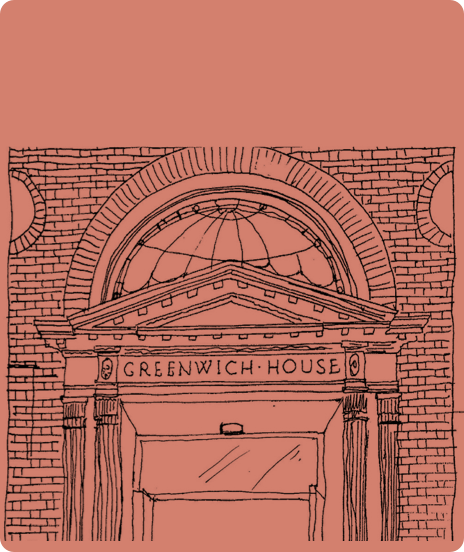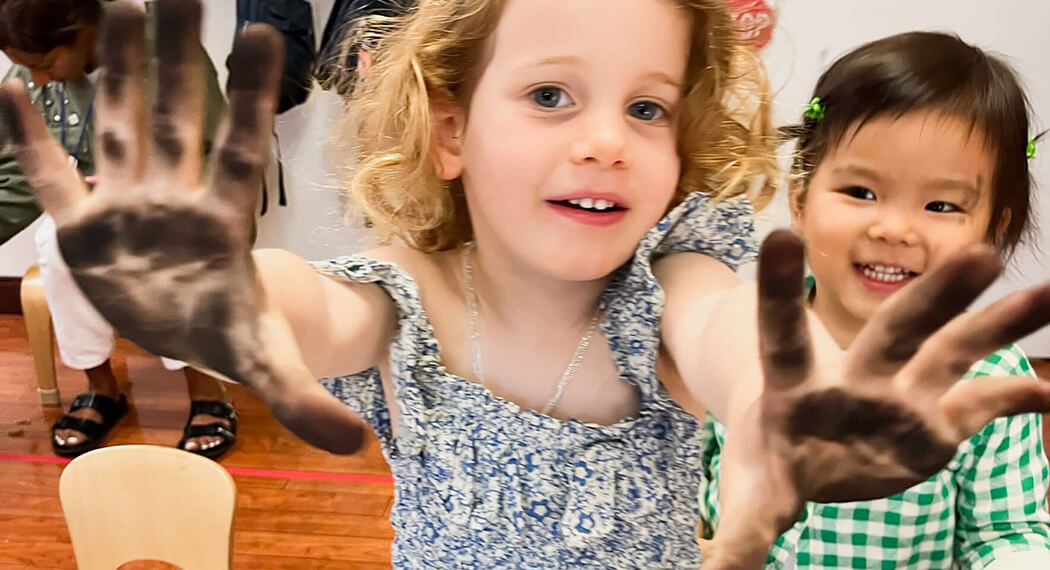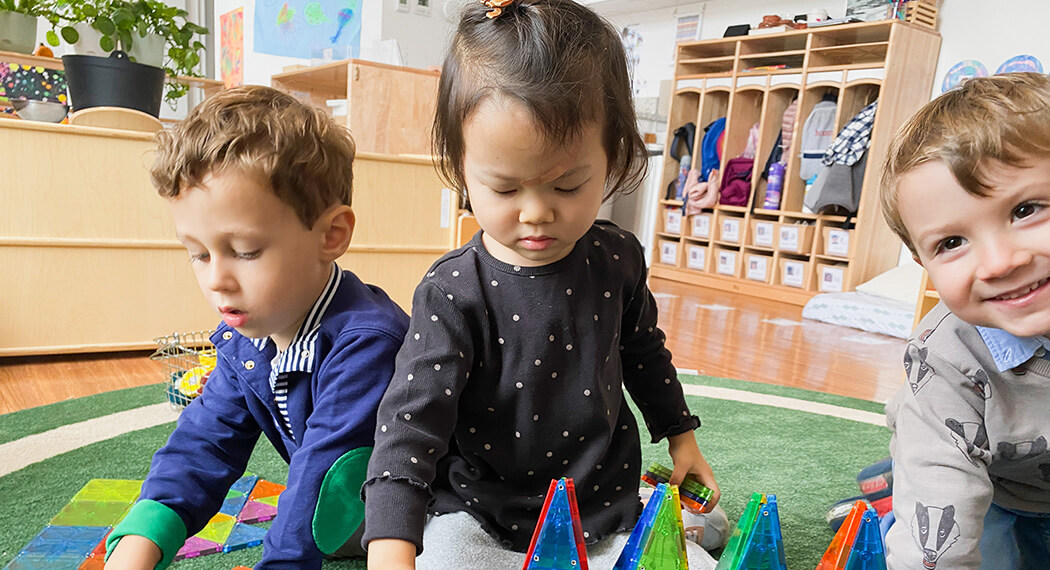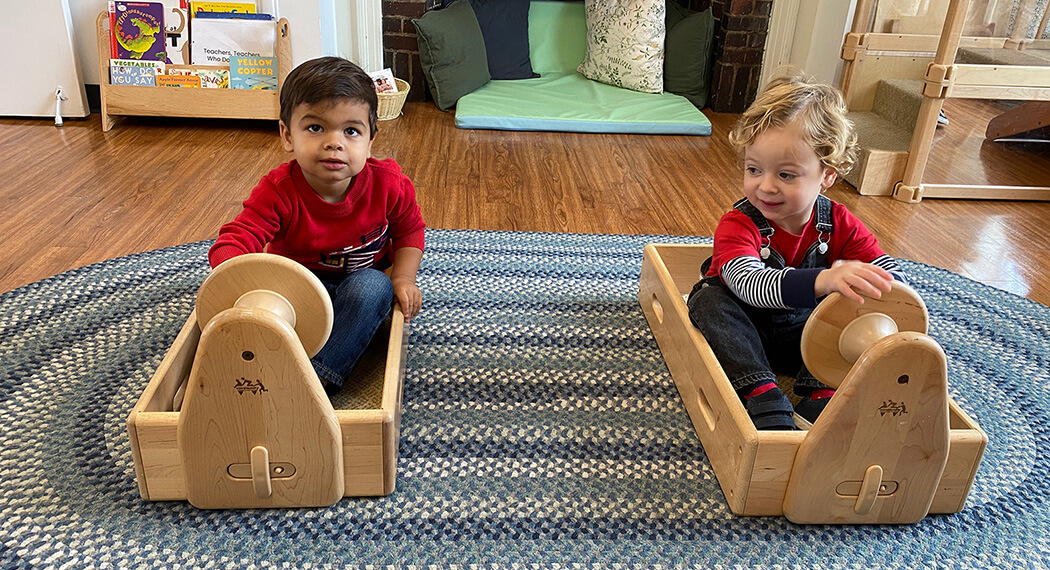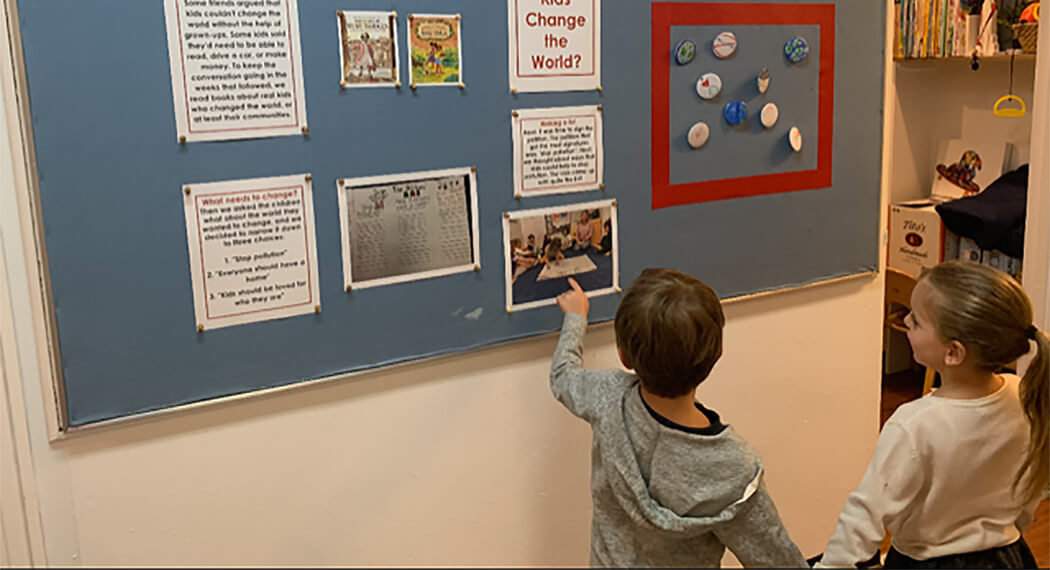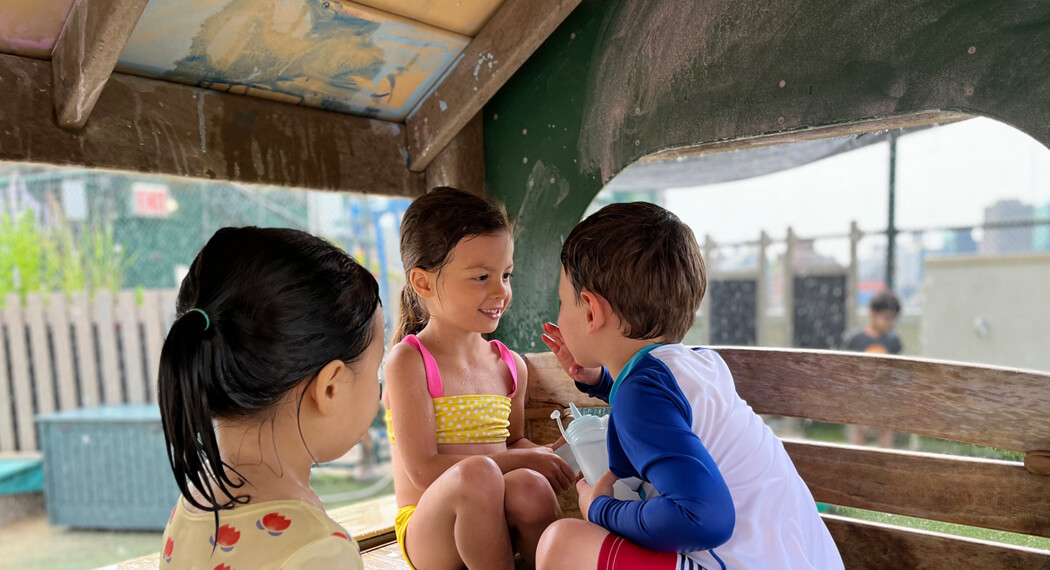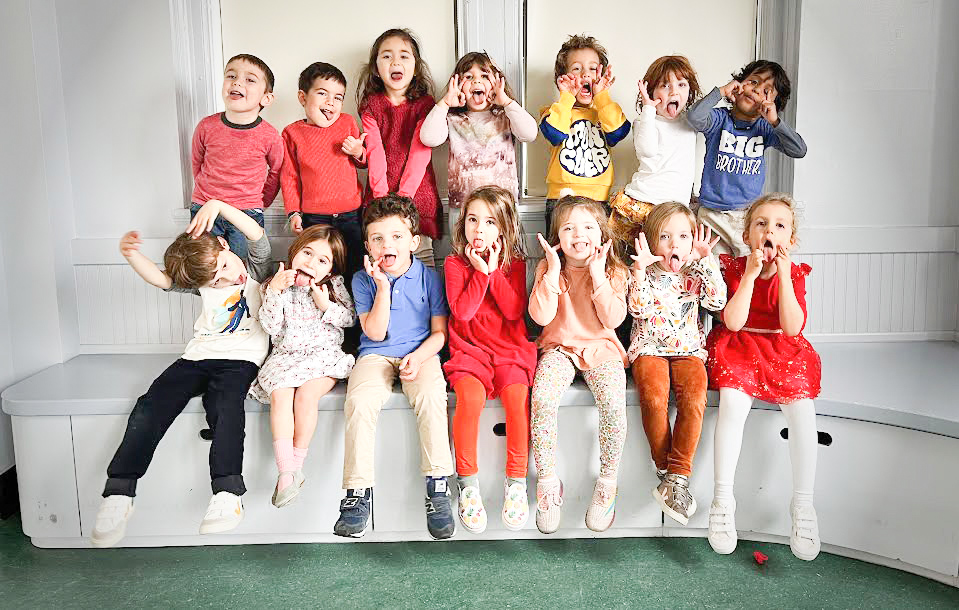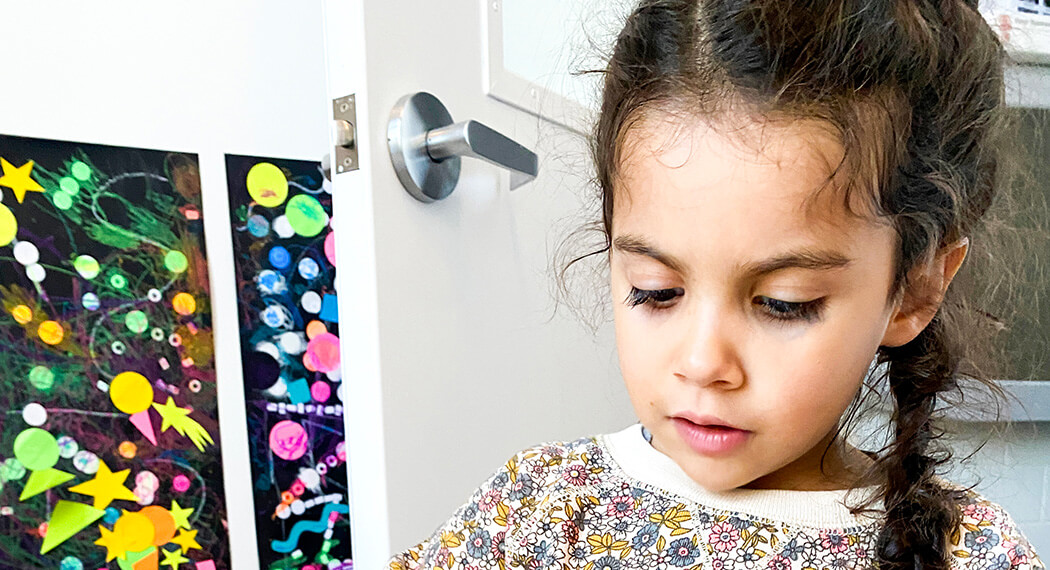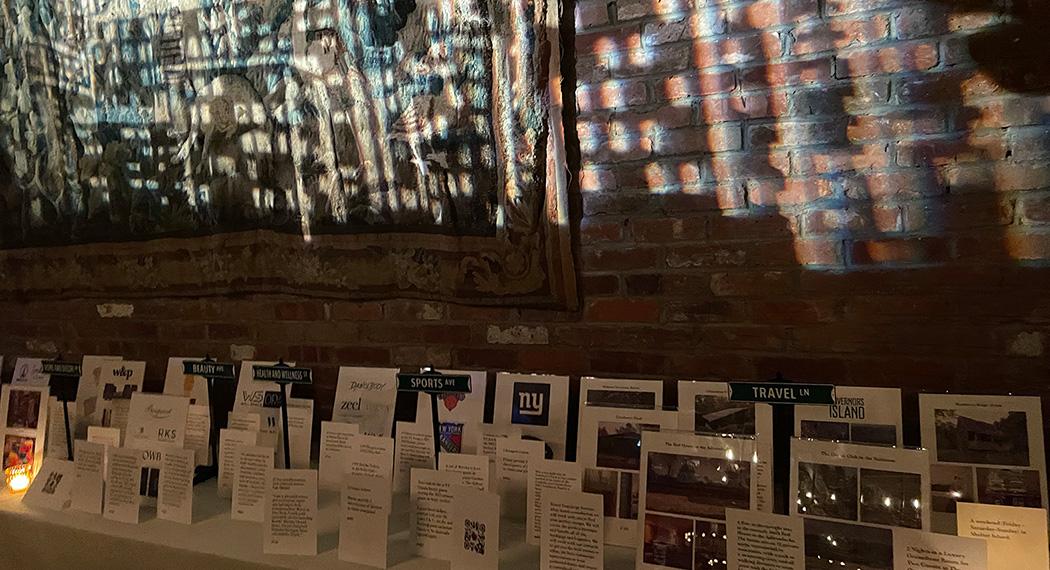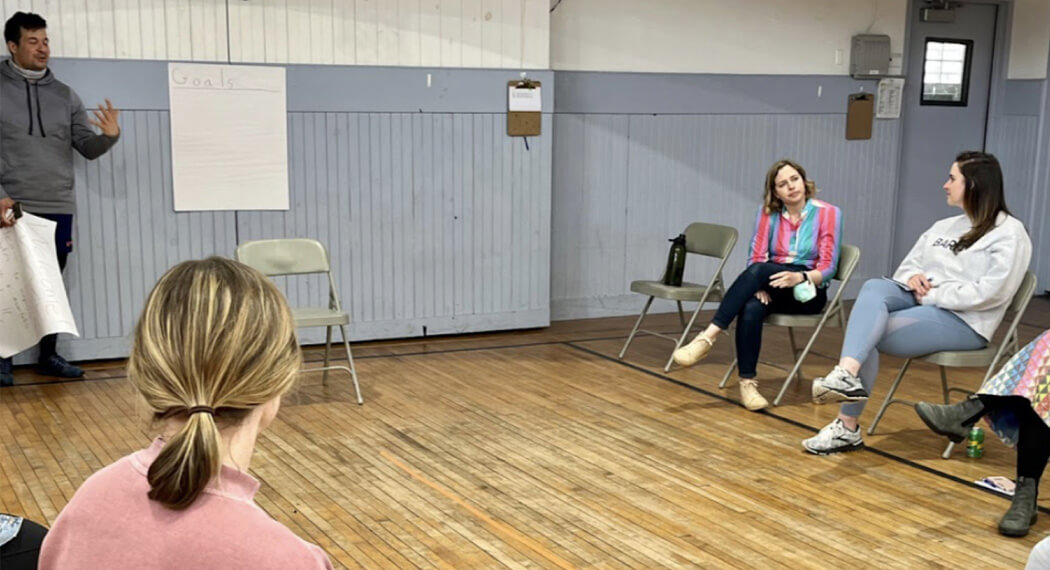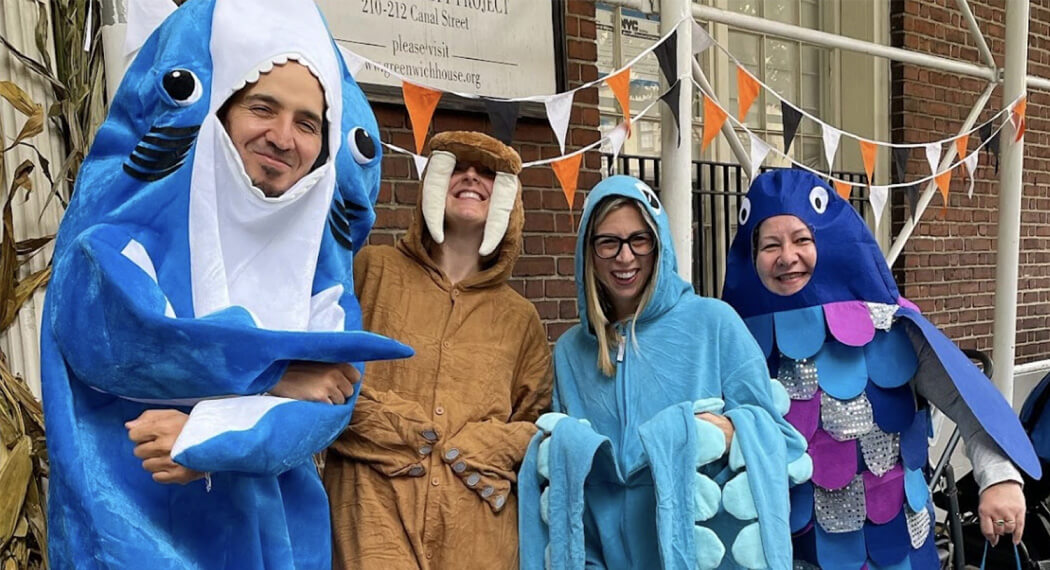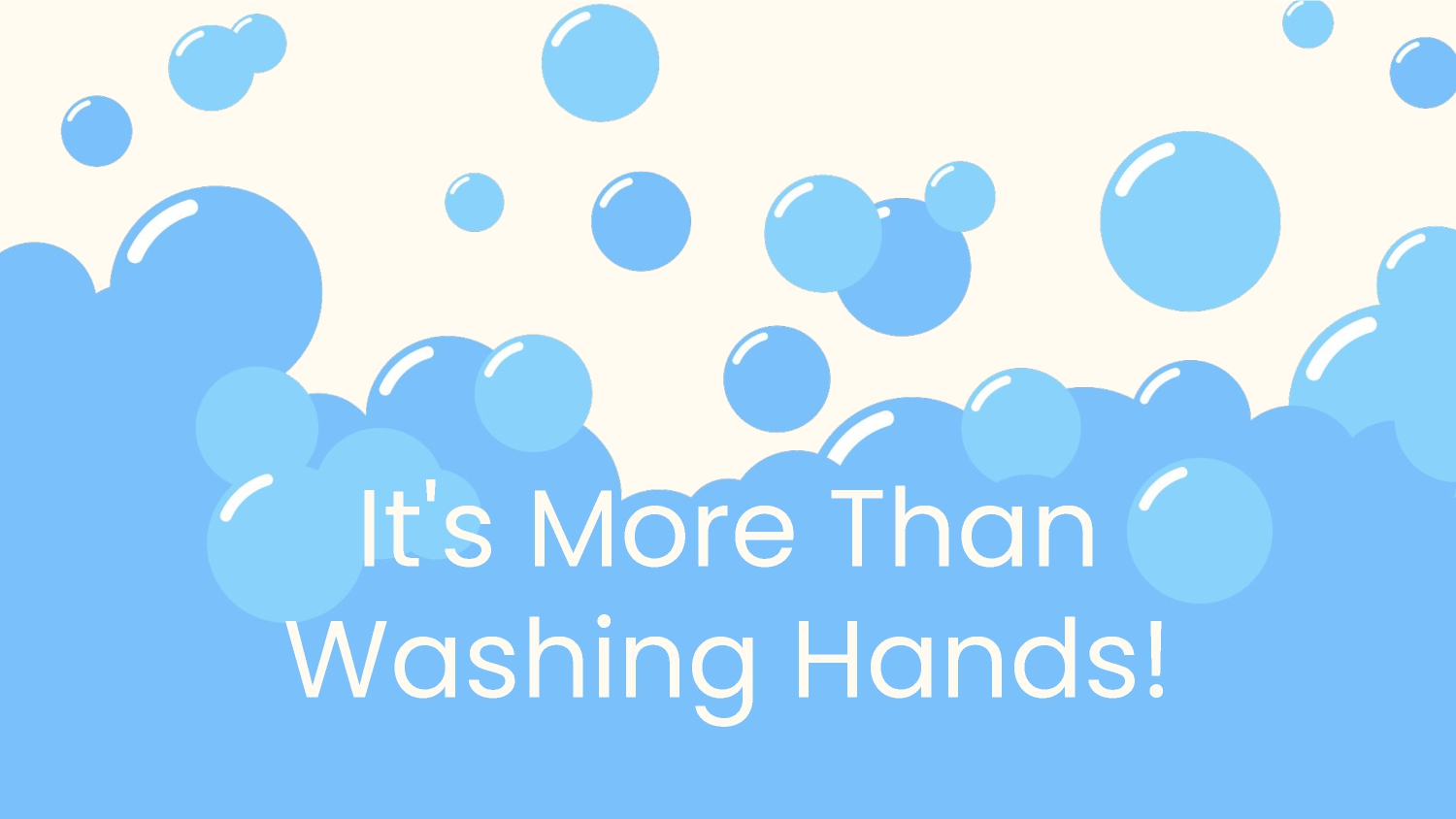The toddler years are a time of rapid growth. So much happens in such a short time, which is why it can be so enlightening to slow down and narrow in on something simple, like washing hands, only to discover it’s not really so simple!
We took the time to observe and reflect on our hand-washing routine and wanted to share with you all the important milestones and skill-building embedded within it!
Social-Emotional
To start, routines provide predictability, which allow children to feel safe and confident starting their day.
Self-Help
As children perform each step of the routine they are practicing self-help skills such as rolling up sleeves, turning the sink on and off, using the soap and towel machines, and drying their own hands.
Language & Literacy
Throughout this process, there are many opportunities for language and literacy practice. Children enjoy reading our hand-washing illustration which visually describes the steps of washing hands. We see them pointing to the illustrations as they complete their steps, practicing their visual literacy as they match their actions to the illustrations. They’ve also begun to notice the red and blue temperature symbols on the faucet, asking what they mean and experimenting with the different temperatures. We hear lots of language during this routine as children match their words to their actions (help, my sleeves, not working, my turn) and use descriptive vocabulary (too hot, fluffy, cold).
Cognitive & Physical
When children use the soap machine and faucet or scrub their hands together, it promotes bilateral brain stimulation as they “cross their midline” to perform these tasks. The body’s midline is an imaginary line down the center of the body that divides the body into left and right. As both the left and right sides of the brain are designed to carry out specific tasks, crossing the midline forces both sides of the brain to work together, which supports the development of executive skills, sensory integration, body awareness, and critical thinking skills. There is also a lot of motor planning involved when using our trash can, which the children have been determined to master! (Pressing the foot pedal, watching the lid open, and throwing the paper towel inside before the lid clamps down!)
Science
Scientific learning throughout this routine includes observing cause and effect when turning the sink on/off or using the soap and towel machines, and experiencing contrasting sensory input such as hold/cold, foamy/clear, and wet/dry.
Identity & Belonging
Lastly, performing this routine together on a regular basis helps to build community as we gather, say hello, discuss exciting outfit choices, and our plans for the day. We practice being a part of a group by waiting in line, taking turns, and watching each other go through each step of the routine.

